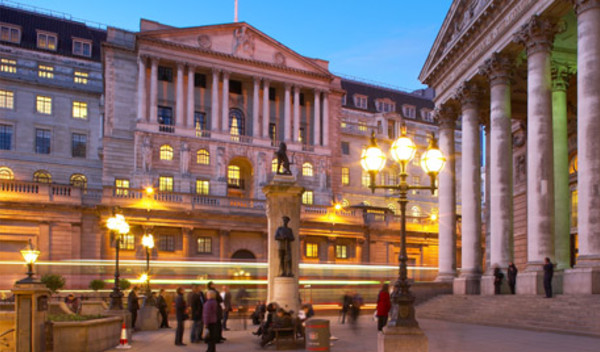

The central bank has restarted its quantitative easing (QE) programme and will purchase an additional £60bn in gilts, as well as up to £10bn in corporate bonds over the next 18 months. It will also introduce a new Term Funding scheme, worth up to £100bn, in order to encourage more bank lending.
The moves comes alongside sharp downwards revisions to growth forecasts in the quarterly inflation report. The BoE now expects 2017 GDP growth of just 0.8 per cent, down from a previous forecast of 2.3 per cent. Its 2016 forecast has been held at 2 per cent after better-than-expected growth in the first half.
The BoE said most Monetary Policy Committee (MPC) members expected to cut rates again this year, to just above zero, should the economy decline in line with their forecasts.
Ten-year gilt yields dropped to a fresh record low following the announcement, from 0.8 per cent to 0.68 per cent.
Sterling dropped against the dollar by 1.1 per cent to $1.3176, though it remains above its post-referendum lows. The BoE now expects inflation to reach 2.4 per cent in 2018, in part due to the pound’s weakness.
Expectations had been growing that the BoE would seek to prop up the economy with a range of measures - not just a rate cut which has taken the base level of interest down to 0.25 per cent, the first movement since March 2009.
But though almost all economists had expected a cut, there was no consensus on whether the MPC would expand the existing £375bn QE programme or use other forms of monetary easing.
Just under half of those surveyed by Bloomberg had expected further QE to be announced at today’s meeting.
The MPC voted 6-3 to increase the level of QE by £60bn, the first change in the policy since 2012, and by 8-1 to buy £10bn in corporate bonds.
New UK chancellor Philip Hammond said of today’s decision: “It is right that monetary policy is used to support the economy through this period of adjustment.”
Many had been expecting a strong reaction to the dwindling business and consumer sentiment seen since the UK’s decision to leave the EU. At July’s meeting, markets had bet on a base rate cut but were left disappointed when the MPC voted 8-1 to keep monetary policy stable.
Governor Mark Carney said last month the committee needed more concrete data on the post-Brexit UK economy before invoking easing measures.
Surveys conducted since the June 23 vote have shown a clear weakening of sentiment, with several purchasing manager indices (PMIs) showing readings of below 50, indicating economic contraction.
The final services PMI reading for July, published on August 3, came in at 47.4, down from 52.3 in June, suggesting the most significant component of UK GDP had begun to shrink. Construction and manufactuing PMIs also showed notable declines last month.
Markit, the firm which produces the surveys, said its measures pointed to a 0.4 per cent quarterly decline in GDP.




